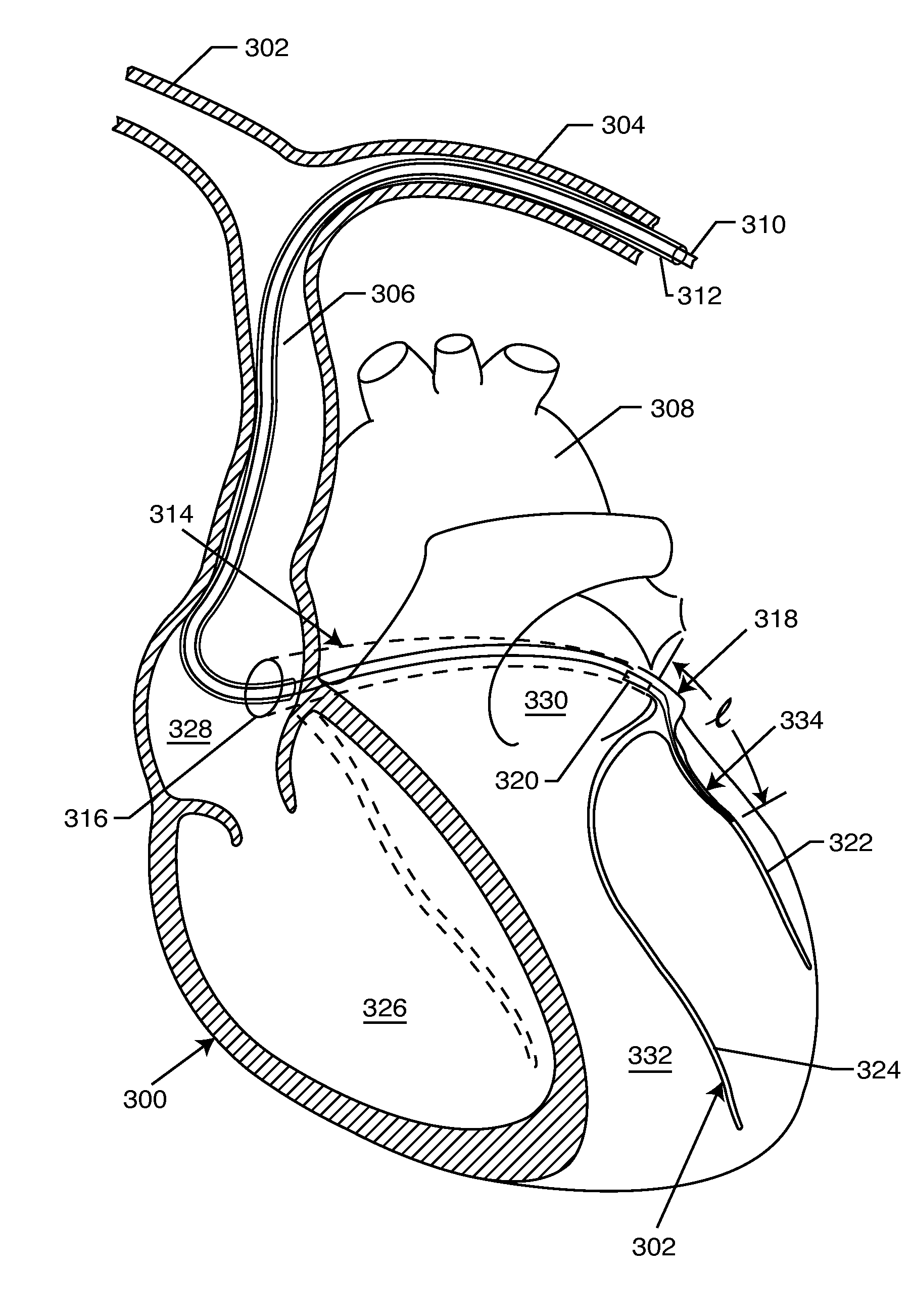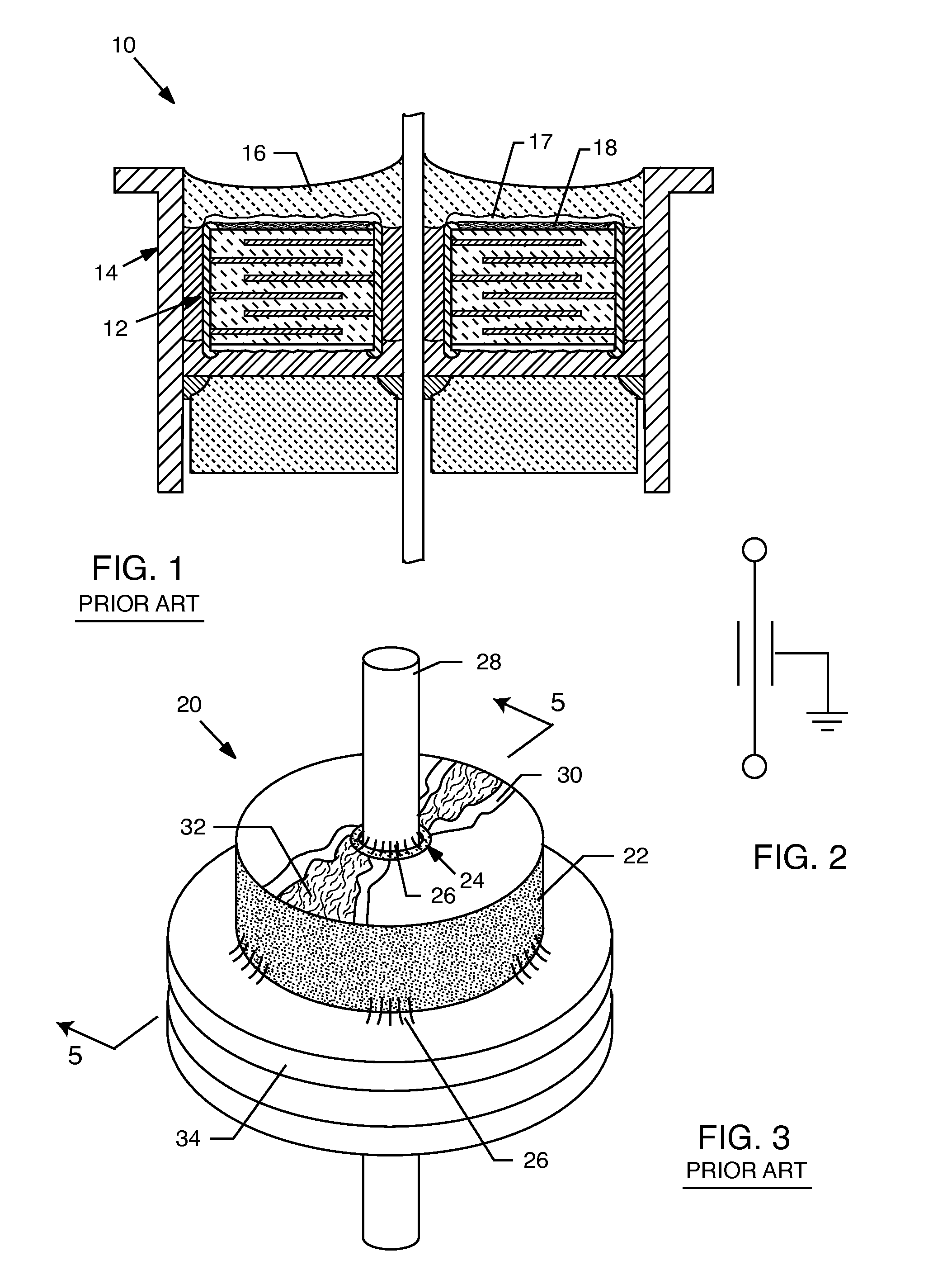In general, monolithic
ceramic capacitors are considered to be sensitive electronic components and are not manufactured of biocompatible materials.
Barium titinate in itself is biocompatible; however, the electrodes and the termination materials are generally not biocompatible.
However, modern pacemakers and
implantable defibrillators tend to be very small in size and are very cramped in terms of space inside the unit.
A significant mistake found in the prior art is the notion that adding some sort of an adjunct
sealant over the top of a monolithic
ceramic feedthrough capacitor will allow it to operate in the presence of body fluids.
Body fluid is an extremely corrosive and conductive medium.
Polymers and adjunct sealants and conformal coatings on electronic components have a number of weaknesses which include problems with adhesion and also bulk permeability.
Thus, after
exposure to temperature excursions or simply after a long period of time, the adhesion of the
coating to the
capacitor surface starts to break down.
In fact, any slight separation of any of the adjunct
sealant could cause a small gap or tightly spaced separation into which
moisture could easily form.
One of the most common and severe failures of electronic components comes from a process known as
metal migration,
whisker formation or dendritic growth.
This can short out the capacitor, thereby shorting out the entire implantable
medical device.
The effect could also be degraded
insulation resistance, which could result in reduced battery life or in reduced functionality of the output waveform of the implantable
medical device.
However, in
actual practice there is a mismatch of thermal coefficients of expansion between the polymers and the
barium titinate of the
ceramic capacitors.
There are also adhesion problems and difficulties with bulk permeability.
Of course those skilled in the art will realize that the formation of these dendrites 32 is highly undesirable because they are conductive and tend to lower the
insulation resistance or short out the capacitor 20.
This is particularly problematic in a
low voltage pacemaker application where the formation of the silver,
tin or other dendrites 32 would preclude the proper operation of the implanted medical device.
Another undesirable effect of the formation of these dendrites 32 is that they would tend to conduct current and thereby dissipate power unnecessarily, leading to premature battery failure of the implanted medical device.
Premature battery failure is highly undesirable and leads to unwanted
surgery and increased expense, usually the replacement of the entire implantable medical device.
Accordingly, another problem can arise during cleaning or washing of the capacitor 36.
Both conditions are highly undesirable in that the
dendrite 38 or 38′ formation could short out or reduce the
insulation resistance between the two lead wires 40 thereby degrading any biological
signal sensing that they may perform.
Detecting the presence of these dendrites can sometimes be very confusing for the test
technician.
A concern is that after years of field use, if the
dendrite were to reform, this could slowly degrade the battery life of the medical device through decreased insulation resistance or degrade the device's ability to sense very low level biological signals.
It is a common misconception that it takes many months or years for
metal migration or dendrites to form.
Internal
metal migration within a
ceramic capacitor can have the same catastrophic effects as surface migration.
Any short circuiting or lowering of insulation resistance of the ceramic
feedthrough capacitor precludes or shorts out the proper operation of the pacemaker itself.
This can be very dangerous or even life threatening to a pacemaker-dependent patient whose heart depends on each pulse from a pacemaker so that it itself will beat.
In addition, ICDs may also respond to EMI by over-sensing that manifests itself as either inhibition or an inappropriate delivery of therapy.
An inappropriate delivery of therapy means that a fully alert and cognizant patient would receive a
high voltage shock.
Delivery of such a
high voltage can injure the patient by literally throwing him off his feet (such a case has been documented with the
male patient breaking his arm).
Formation of dendrites can seriously degrade the proper operation of the pacemaker and / or make the filter ineffective at performing its
proper function.
Ceramic capacitors are very strong in compression, but very weak in tension.
An internal dendrite is a highly undesirable situation to occur because it may short out the capacitor 87.
Such shorting or reduced insulation resistance of the
ceramic capacitor 87 not only degrades its effectiveness as an EMI filter, it also can cause the
catastrophic failure of the entire implantable medical device.
As mentioned, this can be life threatening, for example, in the case of a pacemaker-dependant patient.
In this case, the patient's heart would simply stop beating, which would quickly lead to death.
A second negative associated with a
hermetic seal is it adds greatly to the packaging complexity and the cost.
On the other hand, if
electrical connection material 26 was a lead-bearing solder, the lead could leech into body fluids and become toxic to body tissues.
 Login to View More
Login to View More  Login to View More
Login to View More 


